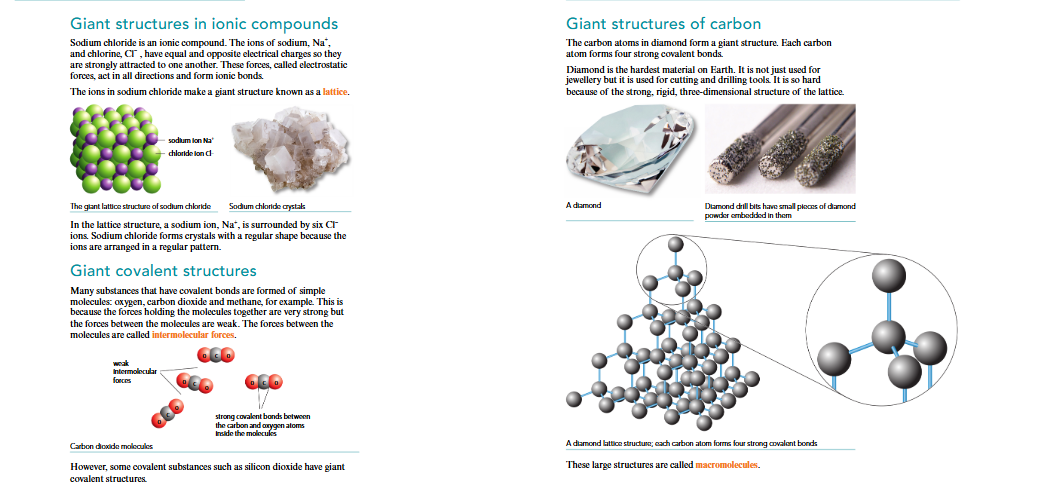I need notes on giant structures in ionic compounds, covalent structures, and carbon structures for my test tomorrow.

Understand the Problem
The question is asking for notes on giant structures in ionic and covalent compounds, as well as the structures associated with carbon. The focus is on the characteristics and properties of these structures to prepare for a test.
Answer
Giant structures in ionic compounds form lattices; covalent and carbon structures like diamond form strong covalent bonds in 3D lattices.
Giant structures in ionic compounds include ion formation and lattice structures, like sodium chloride. Giant covalent structures, such as diamond, involve atoms bonded by strong covalent bonds in three-dimensional lattices. Carbon can form strong covalent networks, giving materials like diamond their hardness.
Answer for screen readers
Giant structures in ionic compounds include ion formation and lattice structures, like sodium chloride. Giant covalent structures, such as diamond, involve atoms bonded by strong covalent bonds in three-dimensional lattices. Carbon can form strong covalent networks, giving materials like diamond their hardness.
More Information
These structures are crucial in determining the chemical and physical properties of materials, such as melting point and hardness.
Tips
Avoid confusing giant covalent and ionic structures; the former involves covalent bonds, while the latter involves ionic bonds.
Sources
- Giant covalent structures - IGCSE Chemistry Revision Notes - savemyexams.com
- Giant ionic structures - GCSE Chemistry (Single Science) Revision - bbc.co.uk
AI-generated content may contain errors. Please verify critical information